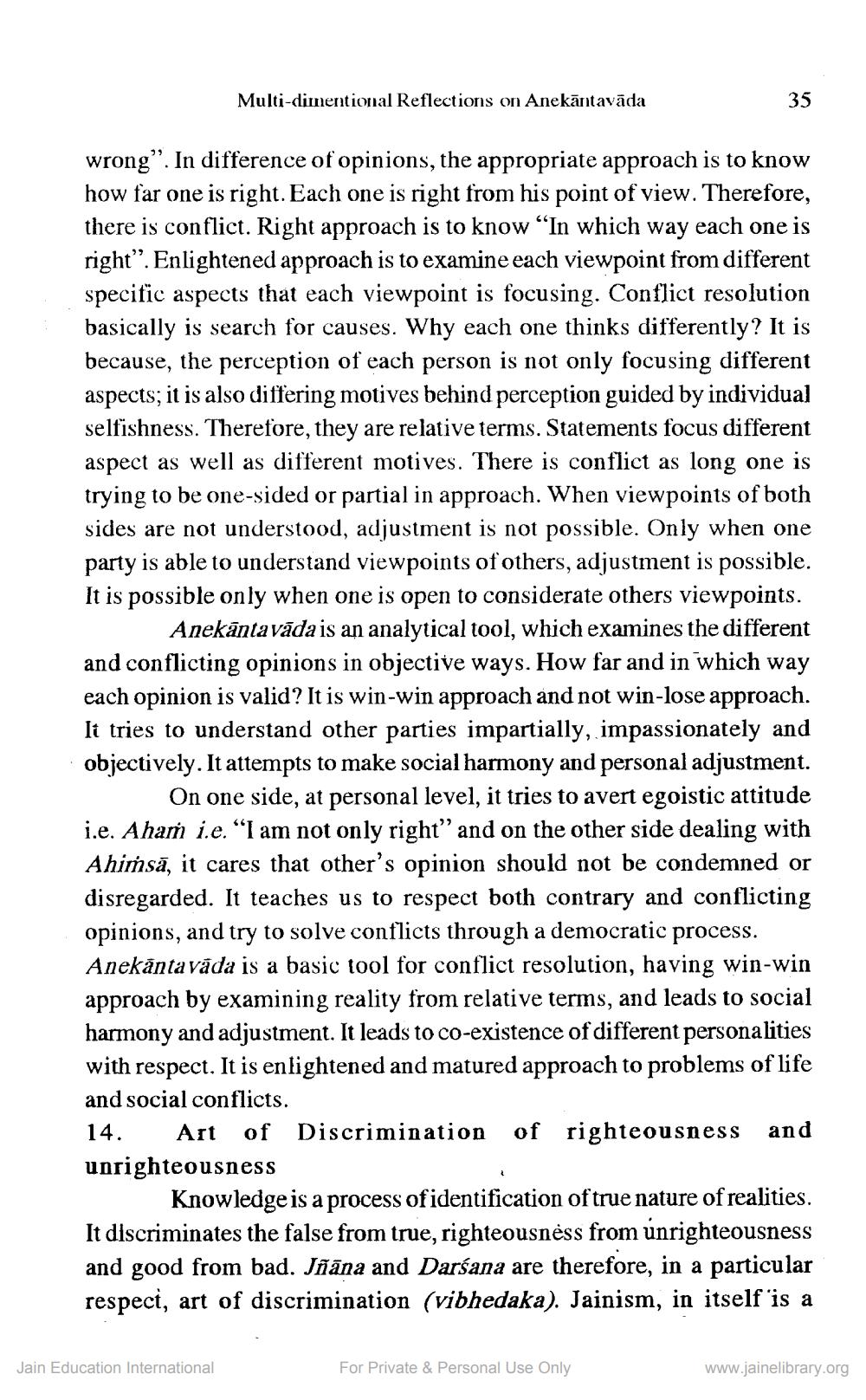________________
Multi-dimentional Reflections on Anekāntavāda
35
wrong". In difference of opinions, the appropriate approach is to know how far one is right. Each one is right from his point of view. Therefore, there is conflict. Right approach is to know "In which way each one is right”. Enlightened approach is to examine each viewpoint from different specific aspects that each viewpoint is focusing. Conflict resolution basically is search for causes. Why each one thinks differently? It is because, the perception of each person is not only focusing different aspects; it is also differing motives behind perception guided by individual selfishness. Therefore, they are relative terms. Statements focus different aspect as well as different motives. There is conflict as long one is trying to be one-sided or partial in approach. When viewpoints of both sides are not understood, adjustment is not possible. Only when one party is able to understand viewpoints of others, adjustment is possible. It is possible only when one is open to considerate others viewpoints.
Anekāntavādais an analytical tool, which examines the different and conflicting opinions in objective ways. How far and in which way each opinion is valid? It is win-win approach and not win-lose approach. li tries to understand other parties impartially, impassionately and objectively. It attempts to make social harmony and personal adjustment.
On one side, at personal level, it tries to avert egoistic attitude i.e. Ahaṁ i.e. “I am not only right” and on the other side dealing with Ahimsă, it cares that other's opinion should not be condemned or disregarded. It teaches us to respect both contrary and conflicting opinions, and try to solve conflicts through a democratic process. Anekānta vāda is a basic tool for conflict resolution, having win-win approach by examining reality from relative terms, and leads to social harmony and adjustment. It leads to co-existence of different personalities with respect. It is enlightened and matured approach to problems of life and social conflicts. 14. Art of Discrimination of righteousness and unrighteousness
Knowledge is a process of identification of true nature of realities. It discriminates the false from true, righteousness from unrighteousness and good from bad. Jñāna and Darśana are therefore, in a particular respect, art of discrimination (vibhedaka). Jainism, in itself is a
Jain Education International
For Private & Personal Use Only
www.jainelibrary.org




